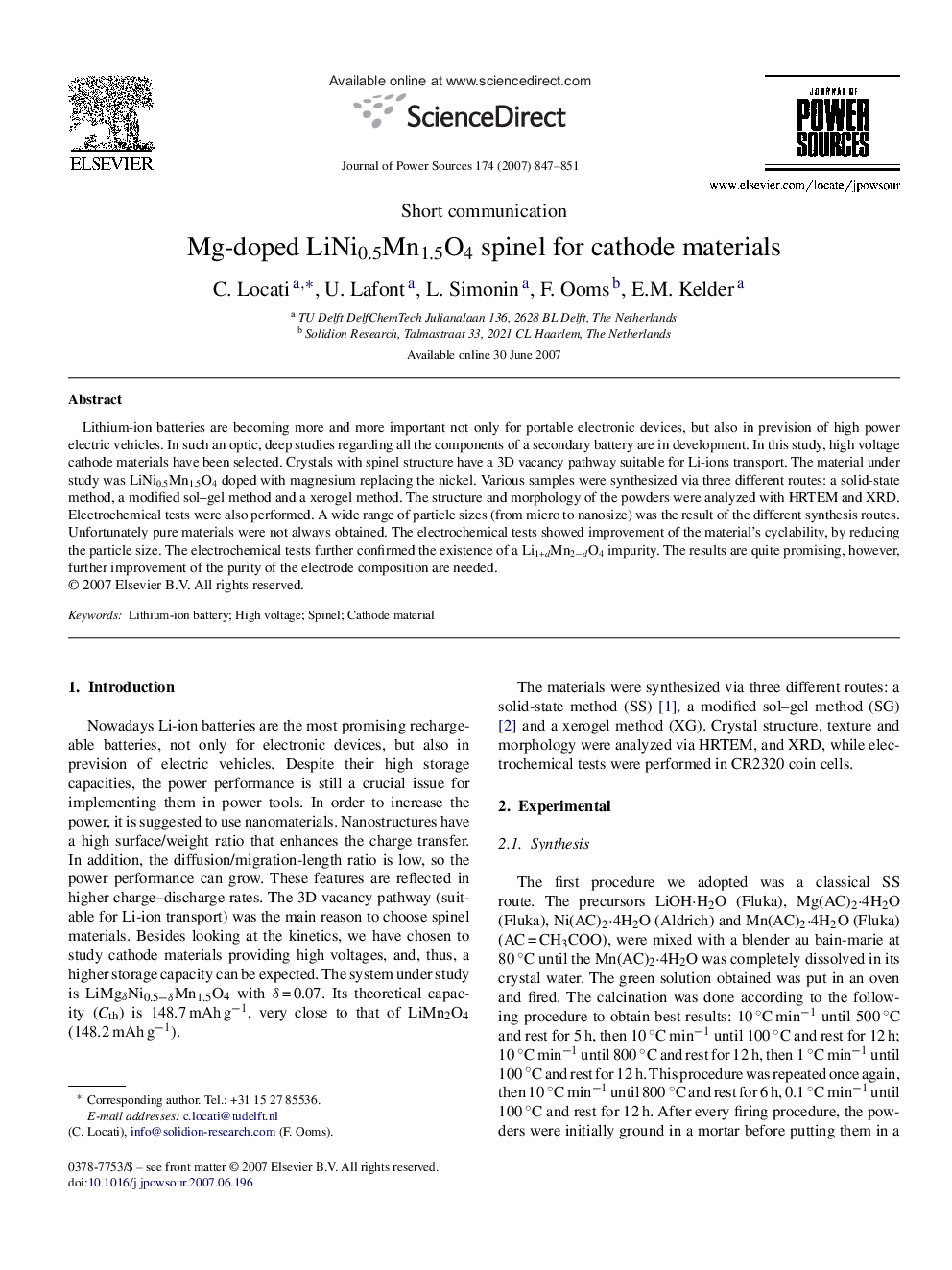| Article ID | Journal | Published Year | Pages | File Type |
|---|---|---|---|---|
| 1286017 | Journal of Power Sources | 2007 | 5 Pages |
Lithium-ion batteries are becoming more and more important not only for portable electronic devices, but also in prevision of high power electric vehicles. In such an optic, deep studies regarding all the components of a secondary battery are in development. In this study, high voltage cathode materials have been selected. Crystals with spinel structure have a 3D vacancy pathway suitable for Li-ions transport. The material under study was LiNi0.5Mn1.5O4 doped with magnesium replacing the nickel. Various samples were synthesized via three different routes: a solid-state method, a modified sol–gel method and a xerogel method. The structure and morphology of the powders were analyzed with HRTEM and XRD. Electrochemical tests were also performed. A wide range of particle sizes (from micro to nanosize) was the result of the different synthesis routes. Unfortunately pure materials were not always obtained. The electrochemical tests showed improvement of the material's cyclability, by reducing the particle size. The electrochemical tests further confirmed the existence of a Li1+dMn2−dO4 impurity. The results are quite promising, however, further improvement of the purity of the electrode composition are needed.
